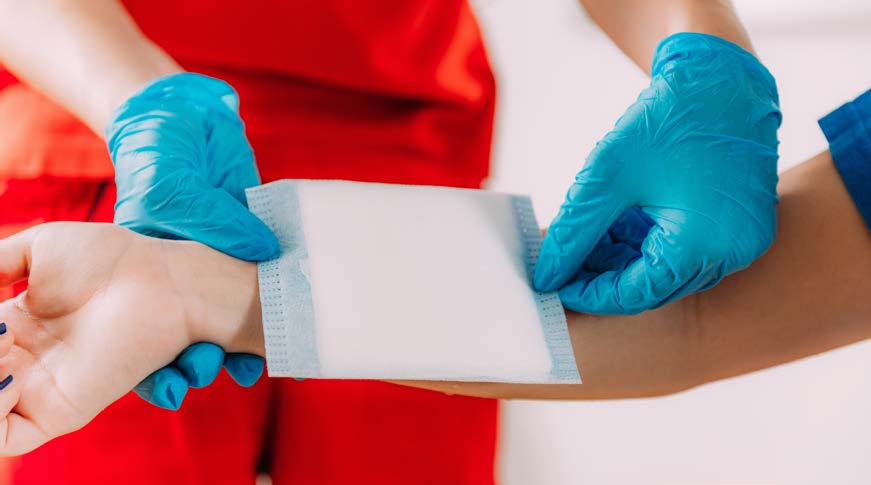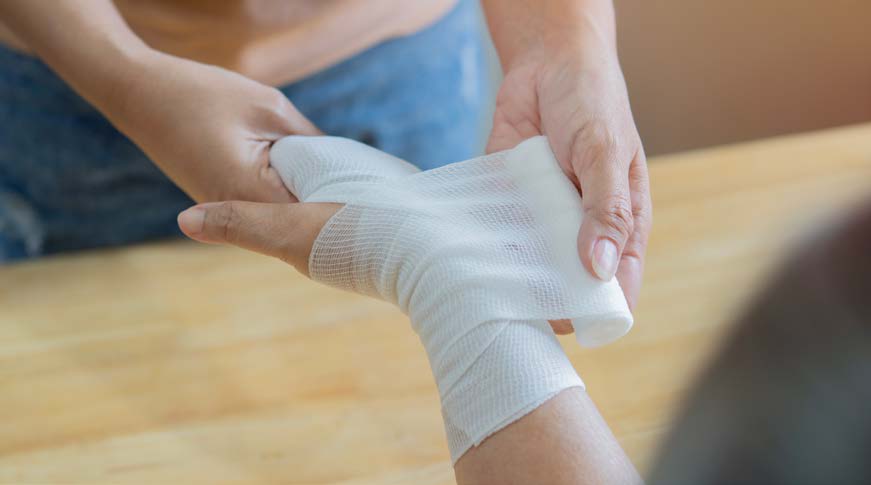First-aid Care: Minor Burns
Minor burns are one of the most common workplace injuries, often caused by hot surfaces, steam, or chemical exposure. Knowing how to respond with proper first aid can reduce pain, prevent infection, and support faster healing.
Whether you manage a busy industrial site or an office setting, having the right knowledge and first-aid supplies on hand is critical to addressing minor burns. This first-aid guide for minor burns explains how to recognize different burn types and treat minor burn injuries safely and effectively to keep your employees safe and productive.
There are four basic types of burns: thermal, chemical, electrical, and sun exposure. Common causes of work-related burns include contact with flames, hot liquid, steam, or super-heated solid objects. Most minor burns can be effectively managed with first aid. A serious burn requires an emergency medical response.
Signs + Symptoms
Burns are assessed by degrees. The degree or depth of a burn dictates the kind of care that is required.
- First-degree burns on the outer layer of skin (epidermis) are considered relatively mild. The area may be red and painful.
- Second-degree burns (partial thickness burns) affect the epidermis and the dermis (lower layer) of skin. They cause redness, swelling, and blistering.
- Third-degree burns (full thickness burns) penetrate the dermis and affect deeper tissues. Skin may appear charred, white, or blackened, and feel numb to the touch.
First Aid
- For minor burns with skin redness:
- Run the burned area under clean, cool running water for at least 20 minutes.
- Do not apply ice, ice water, or a greasy substance such as butter.
- If blisters form, don’t break them.
- Apply a non-prescription burn cream to help keep the area moist.
- For protection, loosely cover the burned area with a non-adherent sterile bandage.
- For swelling or pain: An over-the-counter nonsteroidal antiinflammatory medication, such as ibuprofen or acetaminophen, may be taken at non-prescription strength. Follow directions on the package for non-prescription dosage.
- Monitor: Get a medical evaluation for signs of infection such as increased pain, redness, swelling fever, or oozing. Wash broken blisters with warm water and soap; a non-prescription antibiotic ointment may be applied.


First-aid Supplies for Minor Burns
WorkCare recommends keeping the following supplies on-hand in your first-aid kits:
- Non-prescription burn cream
- Non-adherent sterile bandages
- Non-prescription nonsteroidal anti-inflammatory drugs (NSAIDs) and acetaminophen
- Over-the-counter antibiotic ointment
Let’s Work Together
Ready to take your workforce health and safety to the next level?
Contact us today to learn how WorkCare can partner with you to create a healthier, safer, and more productive workplace.
